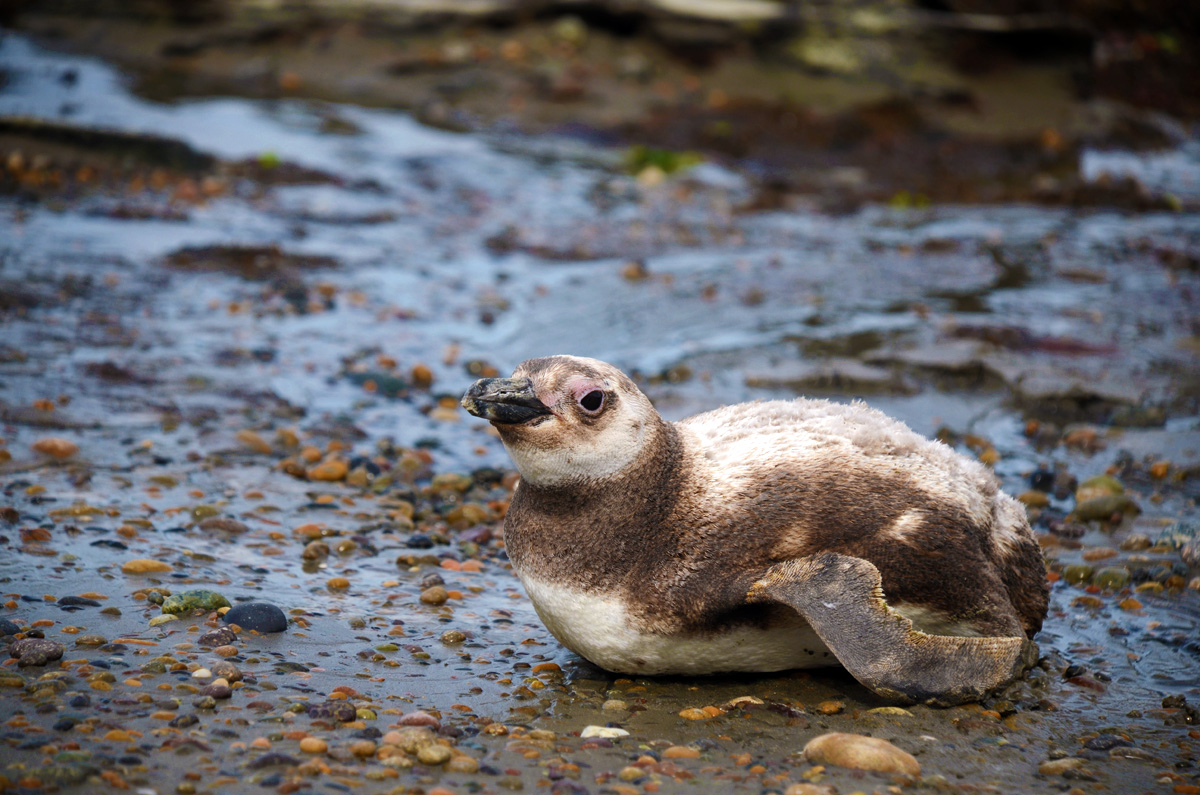Patagonian penguins wash up dead on Brazil’s shores, climate change affects citrus farmers in Argentina and extreme microbes found in the Atacama desert’s highest volcanoes.

ARGENTINA
Argentine citrus farmers are seeing production plummet 50 to 70 percent following alternating periods of intense heat and freezing temperatures. The producers are salvaging what they can, but the situation may last until December 2013, said the president of the Citrus Federation of the Argentine state of Entre Rios, north of Buenos Aires. He has asked the government to declare a national emergency. Meanwhile, in western Argentina, producers are reporting losses of more than 70 million tons.
An international group of scientists is studying the unique group of bacteria and fungi that live under extreme conditions in the volcanoes of northern Argentina and Chile. Exposed to high doses of ultraviolet radiation from altitudes of over 19,000 feet and temperatures that oscillate between 14 and 133 degrees Fahrenheit, the Atacama desert’s volcanic region is one of the Earth’s most inhospitable. Despite this, scientists have found extremophiles that can eke out a living.
BRAZIL
More than 500 Magellanic penguins migrating north from Patagonia have washed up on the shores of Brazil’s southernmost state, Rio Grande do Sul. The penguins were mostly juveniles and died of natural causes, said researchers from Ceclimar (the Brazilian Center for Coastal Studies at the Federal University of Rio Grande do Sul) after an initial assessment.
Though a more detailed answer is expected from autopsy results due back within 30 days, University of Washington professor Dee Boersma says this has happened before. “Every few years the young penguins during their first migration don’t find enough food and many of them keep traveling north and end up coming ashore in Brazil because they are starving to death,” Boersma said in an email.
In 2008, Boersma and a group of Argentine and Brazilian scientists investigating a dieoff of more than 3,000 Magellanic penguins along 5,000 kilometers of Brazil’s coastline concluded that the animals—mostly juveniles—were “dehydrated, anemic, hypothermic, and emaciated.” A combination of warmer waters, less prey and inexperience were cited as causes, in addition to contamination from oil spills.
A team of Brazilian and Spanish scientists have found trace levels of insecticides in Franciscana dolphins found on beaches and fishing nets along Brazil’s coast. The trace chemicals found are of a commonly used variety—known as pyrethroids—found in many commercial household and agricultural insecticides. With 7 nanograms of pyrethroids found per gram of fat in adults and 68.4 nanograms per gram found in offspring, the research shows that these contaminants are passed from mother to calf. It was previously thought that these compounds were degraded by the organism and eliminated, said Damia Barcelo, lead author of the study published in the journal Enviornment International and environmental chemist at the Insitute of Environmental Assessment and Water Research (IDAEA) in Barcelona, Spain.
CHILE
Chilean researchers warn that their country could be the first affected by environmental stress and climate change being seen in Antarctica. “Chile is one of the countries with the most dependence on Antarctic systems, and variations could mean important changes that we’ll see in the span of a human lifetime. This is an impact we need to take seriously,” said Marcelo Leppe at Chile’s institute of Antarctic science (INACH).
A desert ecosystem grows in Chile. Since 1997, the Universidad Catolica has set apart a 4.3 square mile ‘natural laboratory’ in northern Chile’s Atacama desert named the Oasis de Niebla de Alto Patache. Scientists consider the area a paradise—at an altitude of 2,600 feet, it hosts rare insects and 54 different species of flora, many of which flower between September and November. Chilean researchers are studying the plants’ adaptation strategies to look at the viability of their seeds and what triggers their germination, questions important to the conservation of the Atacama’s endemic flora.
COLOMBIA
Colombia has lost 50% of its glaciers in the last fifty years. Though what’s causing their retreat seems to be a combination of solar radiation and warming temperatures, scientists are still trying to tease apart what is happening at the high altitudes. Jorge Luis Ceballos is a Colombian scientist studying his country’s six remaining equatorial glaciers, named for their proximity to the equator.
MEXICO
Insufficient water treatment and waste runoff are changing the color of two lakes in Mexico’s Lagoons of Montebello, a 23 square mile national park not far from the Guatemalan border. Mexican newspaper El Universal reports fish deaths and sulphorous odors emanating from the Esmeralda and Encantada lakes, which the environmental secretary has linked to improper water treatment and runoff from towns nearby. The national park draws 300,000 tourists per year and hosts species like anteaters, pumas, jaguars, armadillos, and quetzals, among others.
